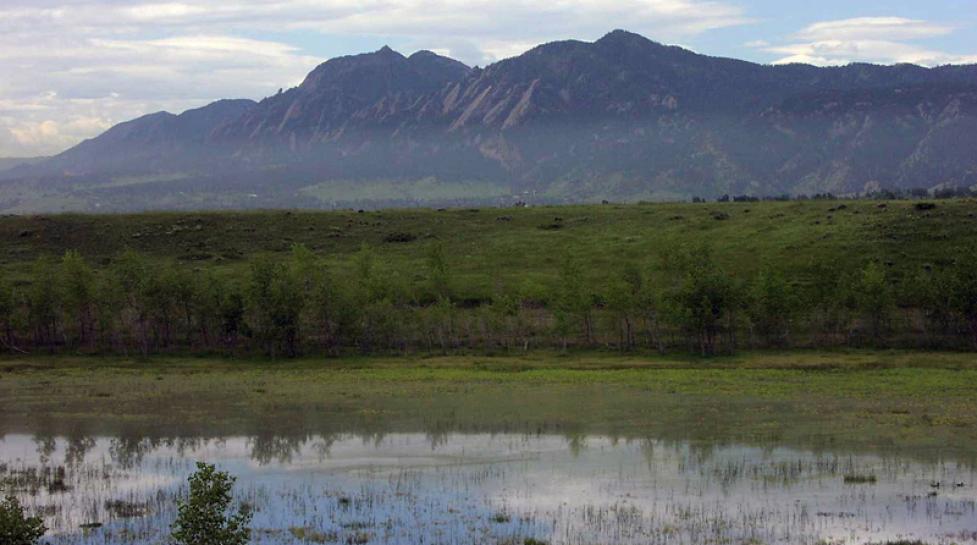There are many things you can do around your home to help protect the stream or wetland buffer on or near your property or to make it friendlier to wildlife.
As a homeowner living near a stream or wetland, you play a critical role in protecting our local water resources. There are many things you can do around your home to help protect the stream or wetland buffer on or near your property or to make it friendlier to wildlife. Please note that some of the practices suggested below may require a wetland permit from the city.
Maintain or restore a buffer strip of native plants along streams and wetlands.
Not only does a buffer enhance ecological and water quality functions of the wetland, its deep roots help protect property by stabilizing the streambank and preventing erosion.
If there is no natural vegetation, consider restoring the area next to the stream with native plants. Native plants are more resistant to disease, reducing the need for pesticide and fertilizer use. Native plants also provide food and habitat for local wildlife. Avoid replacing natural vegetation along streambanks with riprap, rocks or fill.
Avoid extensive paved areas in and near the buffer area.
Pavement can channel polluted runoff into streams and decrease the amount of water seeping into the ground needed to support trees and shrubs. If possible, use porous or pervious materials for decks, patios and drives near buffer areas.
Avoid "cleaning up" the buffer.
Leaves and other organic debris filter stormwater runoff and replenish the nutrients in the soil.
Avoid planting lawn up to a streambank.
Manicured lawns, with their shallow roots, do not effectively prevent erosion or filter runoff before it enters the stream. Consider replacing lawns with native trees, shrubs, native grasses or ground cover, which are better for protecting water quality and providing habitat for wildlife.
Use pesticides and fertilizers sparingly and don’t fertilize before it rains.
Eliminate or reduce the use of pesticides, herbicides and fertilizers, particularly for aesthetic purposes (i.e. lawns). These chemicals can harm wildlife and aquatic life and impact water quality downstream even at very low levels. Many pesticides are a health risk, particularly for children and pets.
Make sure you have a pest problem before using pesticides, and if you must use them, use less toxic products like soaps and plant-based insecticides whenever possible. Also consider recycling your grass - or using a mulching mower to recycle the nutrients and organic matter in grass back into your lawn - instead of fertilizing.
Control non-native, invasive or weedy plants.
Fast–growing, noxious plants such as bindweed, knapweed, teasel and Russian olive trees can smother and kill native plants and trees which support local wildlife and are better suited to local conditions. State of Colorado law requires eradication of some noxious weeds such as purple loosestrife, Mediterranean sage and myrtle spurge. When removing weeds, care should be taken to minimize soil disturbance. It is preferable to manually remove weeds rather than to use herbicides unnecessarily.
Manage access to the stream to prevent trampling and erosion.
Many landowners like to enhance their appreciation of a stream or wetland in their yards by building paths up to the edge of the stream. Paths can be useful in minimizing disturbance of the vegetation and soils in a buffer zone from trampling by focusing stream access to one area and guiding people away from environmentally sensitive areas.
Paths should not interfere with natural drainage lines and are best built with porous material to minimize runoff. Please note that development of a path or trail within a buffer area may require a wetland permit from the city.
Do not use buffer areas as compost sites or for disposal of yard waste.
Compost can contain materials or nutrients that are harmful to wildlife or can alter the natural ecological processes in the stream and wetlands. Dumping yard waste or plant materials can also create blockages in the drainageway. Garden waste can also be a seed source for weeds or other invasive plant species.
